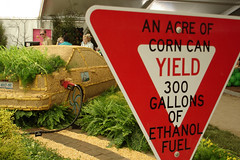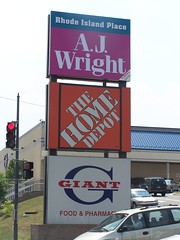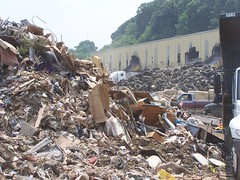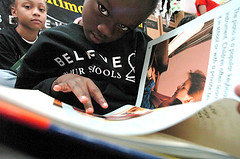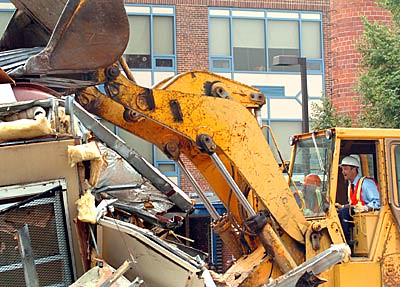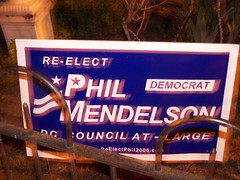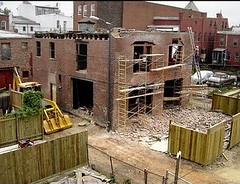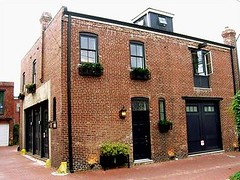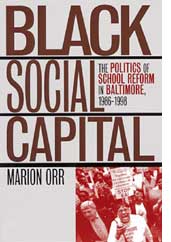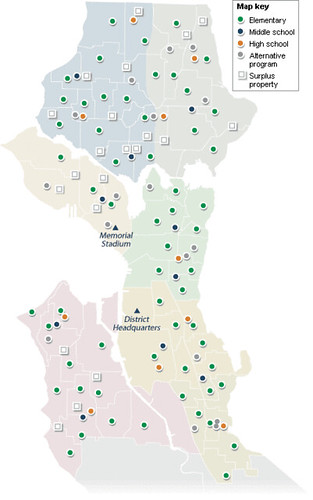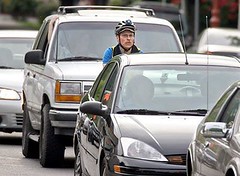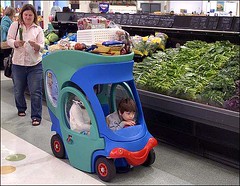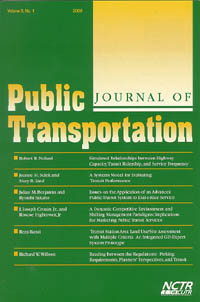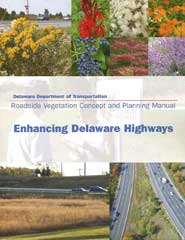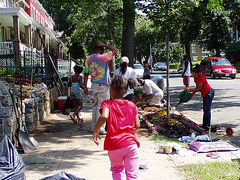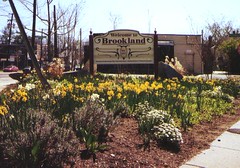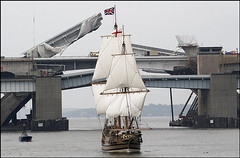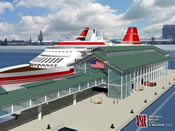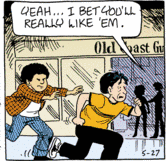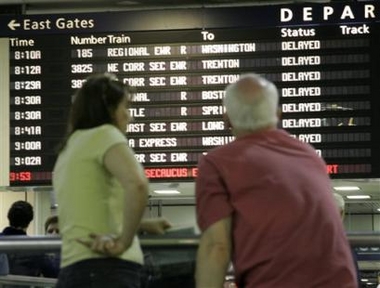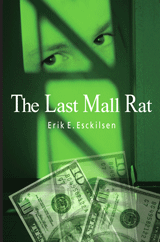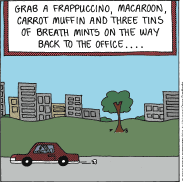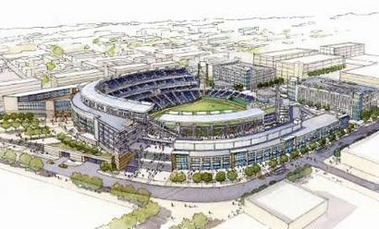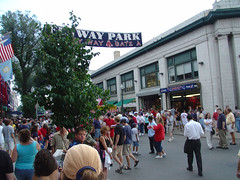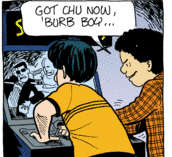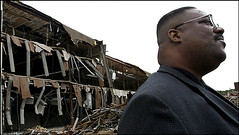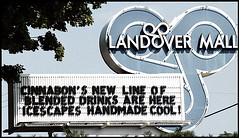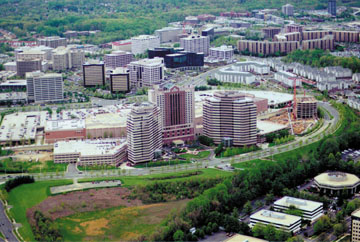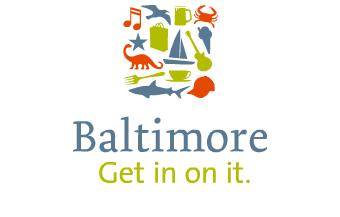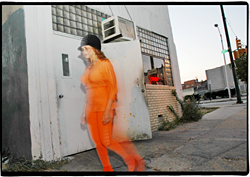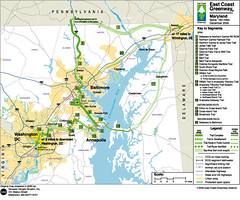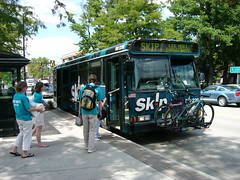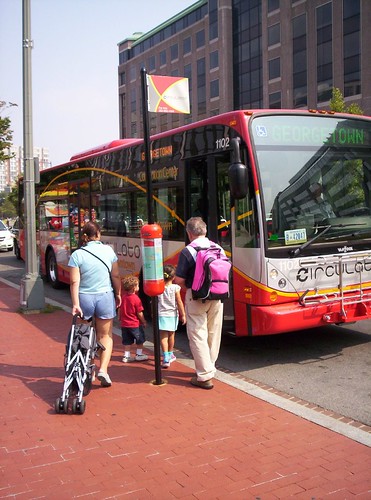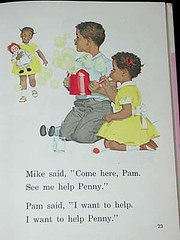My "ungood" ideas submitted to the DC Appleseed contest
1. Create a combined Central Library, City Museum and Visitors Center
A city that's a great place to live is also a great place to visit. Great cities treasure their history and knowledge.
The chronic underfunding of our libraries and the crisis of the DC Archives, and the failure of the City Museum ought to tell us that it's time to rethink these seemingly unconnected planning efforts.
Instead of separate planning initiatives for a central library, the DC Archives, and cultural heritage interpretation initiatives such as a City Museum, plus the "Visitors Center" that people mention--think about combining the functions into one place.
For a number of difficult market development reasons (the Federal Experience defines D.C. and most of the related attractions are free) it is difficult for an independent museum focused upon local history to be successful.
And, we ought to have a good visitors center, like Baltimore's, to help orient people to the city.
That's why I argue for a "cultural resources management plan" for the city, to encompass historic preservation, cultural heritage interpretation, tourism aspects, asset harvesting and development, archival and collections issues, and related arts and cultural activities.
Money from the taxes that support the Convention Center and the Washington Convention and Tourism Corporation should support these activities, not just marketing the city to people from other countries.
A combined Central Library, City Museum and Visitor Center would allow us to harvest the treasures that DC has in abundance.
2. Advisory Neighborhood Commissions are a beautiful concept of civic engagement, but lacking a training infrastructure, too frequently they operate far below the ideal.
DC's Advisory Neighborhood Commissions were created to provide nonpartisan, grassroots government. An elected Commissioner represents a district of 2,000. Councilmember Catania describes the mission thusly: "To provide community-based input to the urban policy-making process.
ANCs are only as effective as the knowledge base of the Commissioners and those constituents who chose to participate in committees (if they are allowed--many ANCs do not provide for resident membership on committees).
The learning and training infrastructure to support informed decision-making doesn't exist. An Office of the ANC provides some support and organizational assistance, but most DC government agencies provide little training about the matters that come before ANCs--such as zoning, planning, public space, transportation, alcoholic beverage licensing, etc.
Some ANCs have members that are quite knowledgeable, but many do not. Local newspapers frequently report on the malfeasance or misfeasance of ANCs and/or ANC Commissioners.
Often, ANCs make decisions without careful consideration. This demonstrates a weakness in participatory democracy, a dearth of informed representatives.
There are best practices examples from around the country that could be adopted in DC to help make ANCs truly a powerful agent for neighborhood improvement, by building a training infrastructure for civic engagement:
- Minneapolis Neighborhood Revitalization Planning program;
- Massachusetts Citizen Planner Training Collaborative;
- Dallas Public Library Urban Information Center; and
- the training models of the volunteer-based Main Street commercial district revitalization program, Project for Public Spaces, and the Asset-Based Community Development Institute.
3. Expanding the idea of the "People's Counsel" to BZA, Zoning Commission, and Alcohol Beverage Control Board Matters.
A problem with regulation is that the system can be gamed through lobbying. Businesses, with much more at stake with regard to the benefit from shaping how they are regulated, expend a lot of money to ensure that they do well or to get what they want.
This is nothing new. The Abramoff Scandal at the Federal level is just one example. But this happens every day, especially at the local level in Washington, DC.
It's difficult for ground-up citizen groups to compete with the traditional business and business-backed forces. There are tremendous imbalances in terms of financial and paid-for staff resources, as well as technical competence, access to technological resources, etc.
This is why I suggest that the "Office of People's Counsel" model used to "represent the public interest" with regard to public utility matters, including rate increases, needs to be extended to land use and planning issues wrt matters before the Zoning Commission, Board of Zoning Adjustment, and the Alcoholic Beverage Control Board.
There are many examples of DC neighborhood groups and residents retaining counsel to represent citizen interests before the above-named boards.
Making citizens pay, like the $500,000 being charged to Clarksburg, Maryland residents fighting the failure of Montgomery County to adequately regulate development in their area, is unreasonable, and again is an instance of protecting citizen rights being more of a privilege of income rather than an income-neutral right of all citizens.
4. Promoting anti-litter behavior through experiential learning in [DC Public] school[s]
With regard to litter, one of the biggest problems is that people lack a sense of connectedness to the environment, an ethic about trash, litter, and responsibility. The best way to address this is to build its development into our learning system, not just within schools but more broadly.
But I am getting ahead of myself. For many many years I have been intrigued by an article I read more than ten years ago in the New York Times Sunday Magazine about elementary education in Japan. In Japan, the schools don't have custodians; the children are responsible for cleaning the school. Now, it might not get quite as clean as it should, but the kids learn about what happens when they make messes...
Similarly, in efforts on litter interdiction in the H Street NE neighborhood, I made the following suggestion (although I am no longer involved with H Street Main Street, so I didn't execute it):
I think that every elementary school should have a fall and a spring cleanup activity around a minimum of a one block radius around the school. This should be done in conjunction with local organizations. But every school in the city should do it, every fall, and every spring, every year...
Children become adults. And they would learn how to properly dispose of trash (and ideally, eventually, that it's a good idea to create less trash). Some of the trash littering our streets and sidewalks ends up in the Anacostia and Potomac Rivers...
5. Build a community of learning centered around the schools through family learning contracts.
Until we have families and peer groups that support learning, we're not going to be able to improve outcomes. School systems can only do so much.
There is an interesting article about "positive deviance" in the May 2005 issue of the Harvard Business Review. It includes a case study about the schools in an impoverished state in Brazil where the teachers hadn't been paid in 6 months, and the test results for the entire province were about 50% worse than the national average.
Yet some schools were amongst the highest performers in the country.
It turned out this occurred because these schools engaged the entire family into the process of achieving academic success by creating family learning contracts. Parents were also motivated to do this because they were often illiterate, and literate children were able to help connect the family to government services by being able to read, write, and translate information about the programs.
This provided an additional sweetener, making the whole family committed to and engaged in the classroom success of their child(ren).
This idea of the family learning contract has a lot of relevance to urban school systems. Schools only have children for 6-8 hours/day. The rest of the time they are under the influence of peers, parents, and other members of the community. We can begin to right this process by getting the whole family committed to and participating in the learning life of their children.
Index Keywords: civic-engagement
